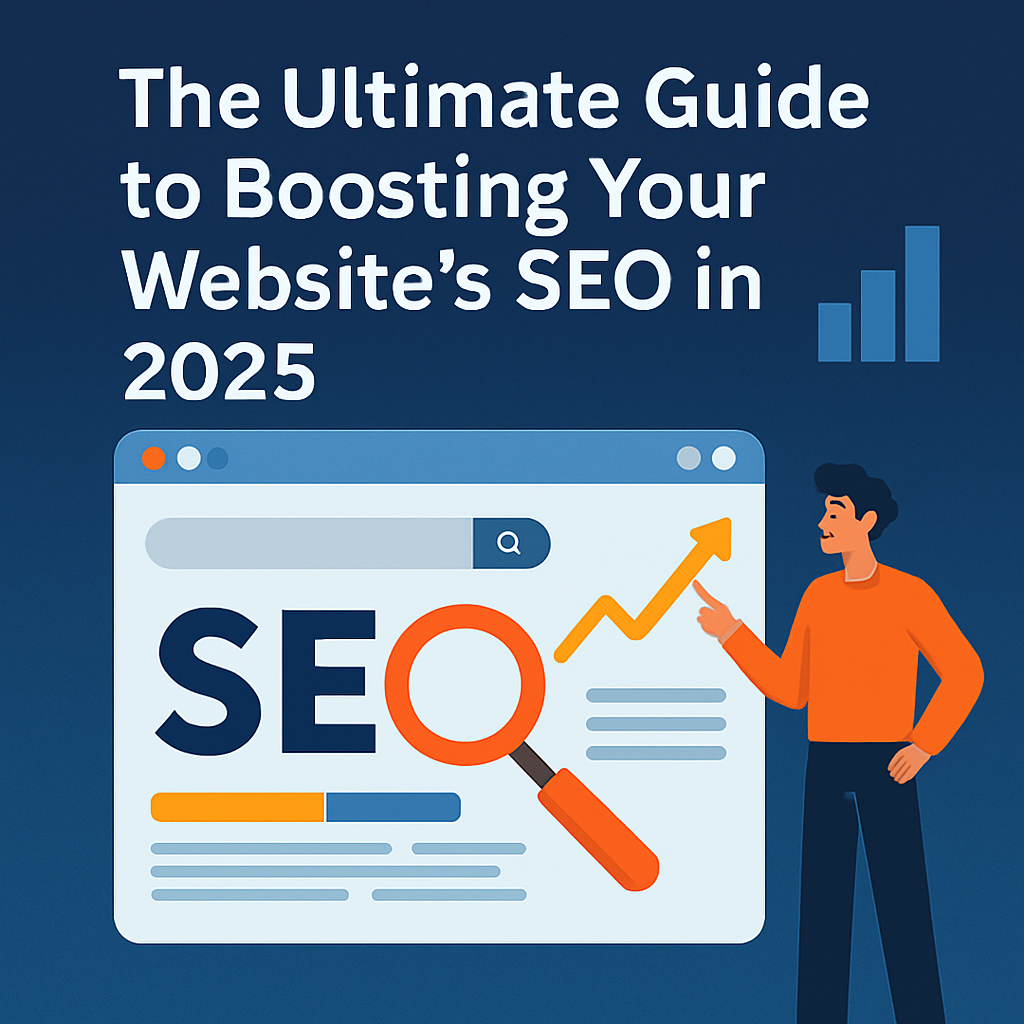In today’s digital landscape, search engine optimization (SEO) is more important than ever. With billions of websites competing for attention, ensuring your site ranks high on search engine results pages (SERPs) can make or break your online presence. Whether you’re a small business owner, a blogger, or a digital marketer, understanding the latest SEO strategies is crucial for driving organic traffic and staying ahead of the competition.
In this guide, we’ll explore actionable tips and strategies to help you boost your website’s SEO in 2025. From keyword research to technical optimization, we’ve got you covered.

1. Understand the Importance of Keyword Research
Keyword research remains the foundation of any successful SEO strategy. By identifying the terms and phrases your target audience is searching for, you can create content that aligns with their needs and interests.
How to Conduct Effective Keyword Research:
- Use tools like Google Keyword Planner (https://ads.google.com/home/tools/keyword-planner/) or Ahrefs (https://ahrefs.com/) to discover high-volume, low-competition keywords.
- Focus on long-tail keywords, as they often have less competition and higher conversion rates.
- Analyze your competitors’ websites to identify the keywords they’re ranking for.
Pro Tip: Don’t just target keywords with high search volume. Instead, prioritize relevance and user intent to attract the right audience to your site.
2. Create High-Quality, Engaging Content
Content is king in the world of SEO. Search engines like Google prioritize websites that provide valuable, relevant, and engaging content to users. In 2025, the emphasis is on creating content that satisfies search intent while offering a unique perspective.
Tips for Creating SEO-Friendly Content:
- Write in-depth articles that answer common questions or solve specific problems.
- Use tools like Grammarly (https://www.grammarly.com/) to ensure your content is free of grammatical errors.
- Incorporate multimedia elements such as images, videos, and infographics to enhance user engagement.
- Update old content regularly to keep it relevant and accurate.
Remember, the goal is to create content that not only ranks well but also keeps visitors on your site longer, reducing bounce rates and improving user experience.
3. Optimize On-Page SEO Elements
On-page SEO refers to the optimization of individual web pages to improve their rankings. This includes everything from meta tags to internal linking.
Key On-Page SEO Practices:
- Title Tags: Ensure your title tags are compelling and include your target keyword. Keep them under 60 characters to avoid truncation.
- Meta Descriptions: Write concise meta descriptions (under 160 characters) that summarize your content and include a call-to-action.
- Header Tags: Use H1, H2, and H3 tags to structure your content and make it easier to read.
- Internal Links: Link to other relevant pages on your site to improve navigation and distribute link equity.
Pro Tip: Use tools like Yoast SEO (https://yoast.com/) if you’re using WordPress to ensure your on-page elements are optimized.
4. Focus on Mobile Optimization
With over 60% of web traffic coming from mobile devices, having a mobile-friendly website is no longer optional. Google’s mobile-first indexing means that the mobile version of your site is prioritized when determining rankings.
How to Optimize for Mobile:
- Use responsive design to ensure your site adapts to different screen sizes.
- Test your site’s mobile performance using Google’s Mobile-Friendly Test (https://search.google.com/test/mobile-friendly).
- Optimize images and videos to reduce load times on mobile devices.
- Avoid intrusive pop-ups that can frustrate mobile users.
A seamless mobile experience not only improves your SEO but also enhances user satisfaction, leading to higher engagement and conversions.
5. Improve Website Speed and Performance
Page speed is a critical ranking factor for both desktop and mobile searches. A slow-loading website can lead to higher bounce rates and lower rankings.
Steps to Boost Page Speed:
- Use tools like Google PageSpeed Insights (https://pagespeed.web.dev/) to identify performance issues.
- Compress images using tools like TinyPNG (https://tinypng.com/).
- Enable browser caching and use a content delivery network (CDN) to reduce server response times.
- Minimize the use of heavy scripts and plugins that can slow down your site.
Pro Tip: Aim for a page load time of under 3 seconds to provide the best user experience.
6. Leverage Backlinks for Authority
Backlinks, or inbound links from other websites, are a key factor in determining your site’s authority and trustworthiness. High-quality backlinks signal to search engines that your content is valuable and credible.
How to Build Quality Backlinks:
- Create shareable content, such as original research, case studies, or infographics.
- Reach out to industry influencers and bloggers for guest posting opportunities.
- Use tools like SEMrush (https://www.semrush.com/) to analyze your competitors’ backlink profiles and identify potential link-building opportunities.
- Participate in online communities and forums to share your expertise and link back to your site.
Avoid spammy link-building practices, as they can lead to penalties from search engines.
7. Utilize Local SEO for Targeted Traffic
If you run a local business, optimizing for local SEO can help you attract customers in your area. Local SEO focuses on improving your visibility in location-based searches, such as “coffee shop near me.”
Local SEO Tips:
- Claim and optimize your Google Business Profile (https://www.google.com/business/).
- Encourage satisfied customers to leave positive reviews on platforms like Google and Yelp.
- Include your business name, address, and phone number (NAP) consistently across your website and online directories.
- Use location-specific keywords in your content and meta tags.
Pro Tip: Add a map to your website’s contact page to make it easier for customers to find you.
8. Monitor and Analyze Your SEO Performance
SEO is an ongoing process, and tracking your performance is essential for identifying what’s working and what needs improvement.
Tools for SEO Analysis:
- Google Analytics (https://analytics.google.com/) provides insights into your website traffic, user behavior, and conversion rates.
- Google Search Console (https://search.google.com/search-console/) helps you monitor your site’s performance in search results and identify technical issues.
- Use tools like Moz (https://moz.com/) or Ahrefs to track keyword rankings and backlink profiles.
Regularly reviewing your analytics data allows you to make data-driven decisions and refine your SEO strategy over time.
9. Stay Updated with SEO Trends
The world of SEO is constantly evolving, with search engines updating their algorithms regularly. Staying informed about the latest trends and best practices is crucial for maintaining your competitive edge.
How to Stay Updated:
- Follow reputable SEO blogs like Search Engine Journal (https://www.searchenginejournal.com/) and Moz Blog (https://moz.com/blog).
- Join online communities and forums to exchange ideas with other SEO professionals.
- Attend webinars, conferences, and workshops to learn from industry experts.
By staying ahead of the curve, you can adapt your strategy to align with the latest developments in SEO.
Final Thoughts
Boosting your website’s SEO in 2025 requires a combination of technical expertise, creative content, and a commitment to continuous improvement. By implementing the strategies outlined in this guide, you can enhance your site’s visibility, attract more organic traffic, and achieve your online goals.
Remember, SEO is a long-term investment. While results may not be immediate, the effort you put in today will pay off in the form of sustained growth and success in the future.
Start optimizing your website today and watch your rankings soar!
Ready to supercharge your SEO in 2025? Schedule a free strategy call with our experts today and let’s get your business ranked!


0 Comments